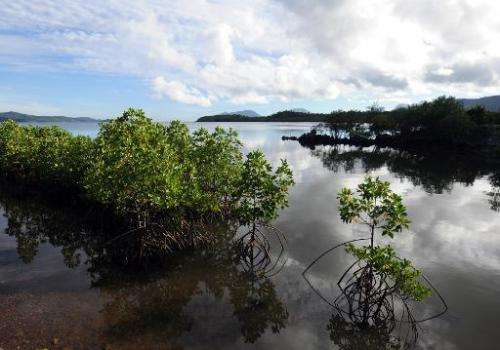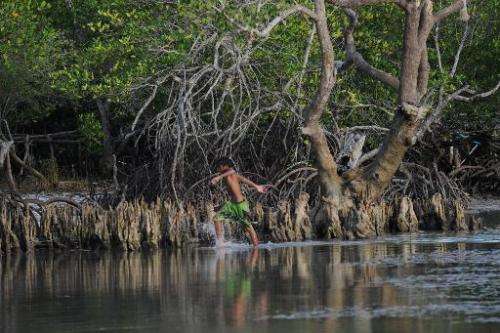Philippines to plant more mangroves in wake of Typhoon Haiyan

The Philippines said Sunday it will plant more mangrove areas to prevent a repeat of the deadly storm surges that claimed hundreds of lives during Super Typhoon Haiyan earlier this month.
President Benigno Aquino's spokesman Herminio Coloma said the move was among the measures that will be part of the "comprehensive programme of environmental protection", that is being forged in the wake of the killer typhoon.
Environment Secretary Ramon Paje is readying the programme which will include "no-build zones" in coastal areas, even if it means moving people who already live in such places, said Coloma.
"Among the directives of the president is to restore the mangroves which are natural protection of coastal areas," he told reporters.
"We have already prepared mangrove plantations and we hope to begin planting soon because it takes five to seven years for these things to grow," he added.
Mangroves refers to trees and bushes that grow in marine coastal areas like marshlands with the plants standing out of the water during high tide.
Super Typhoon Haiyan left almost 7,000 people dead or missing when it swept through the central Philippine islands earlier this month, many of them killed by storm surges that hit coastal areas sending five-metre (16-feet)high, tsunami-like waves deep inland, destroying buildings.

Coloma said "geohazard mapping" by the environment department would identify which areas are vulnerable to natural disasters like storms and floods.
The Philippine government has been encouraging the protection of mangrove areas not only for protection against storm surges and waves but also because they prevent erosion of coastlines, act as nurseries for marine life and even serve as carbon sinks against global warming.
However the environment department has said many mangrove areas have already been lost due to conversion to other purposes like commercial fishponds and cutting of the plants for firewood and timber.
© 2013 AFP

















